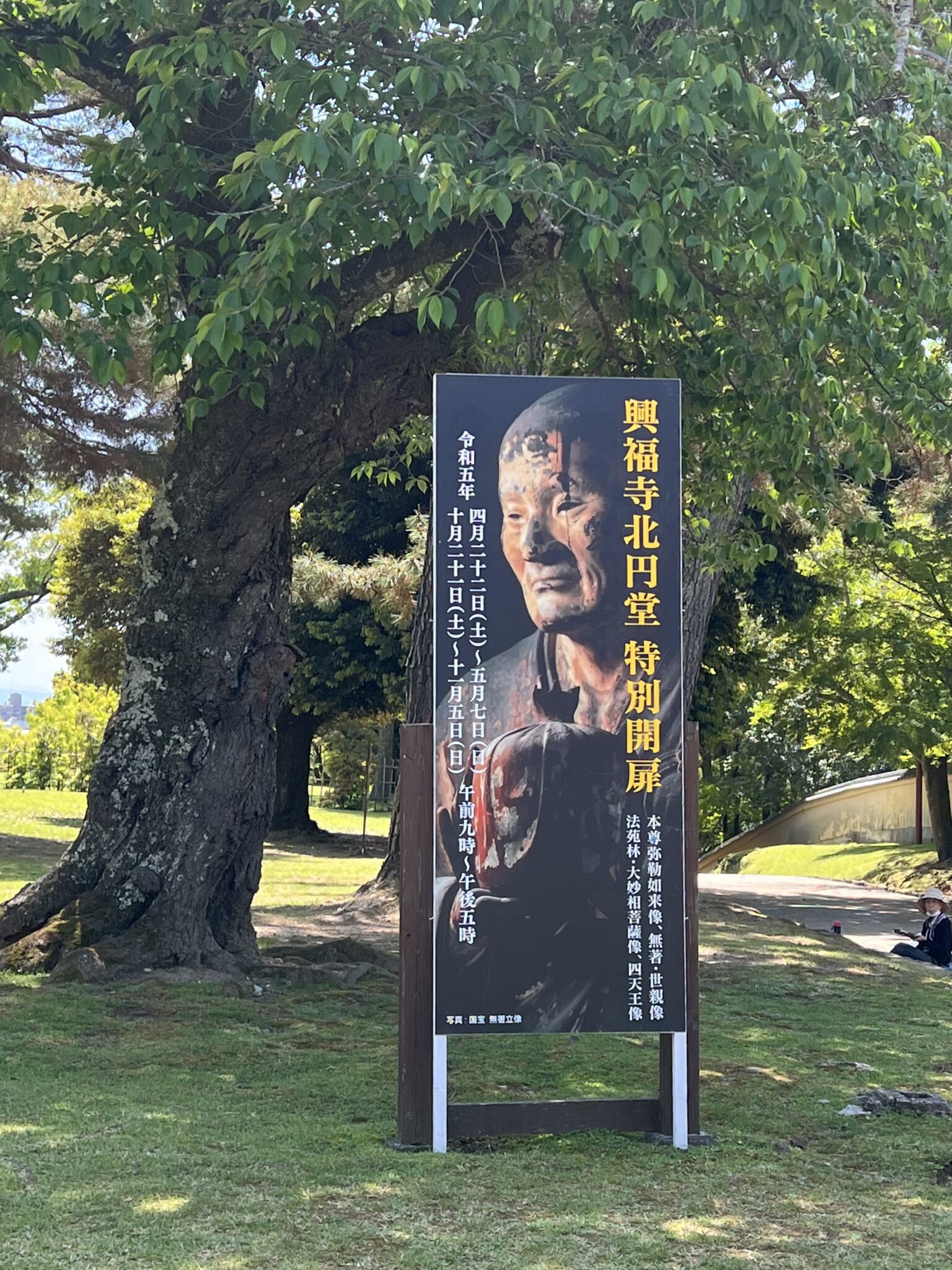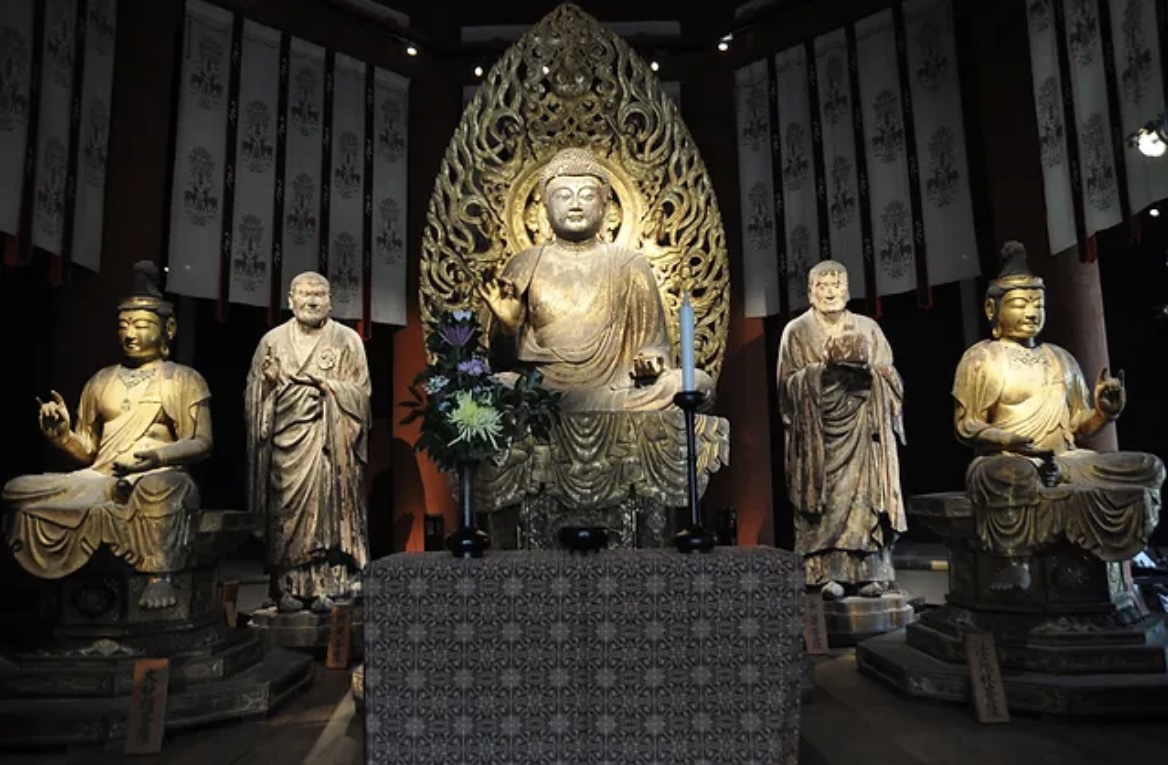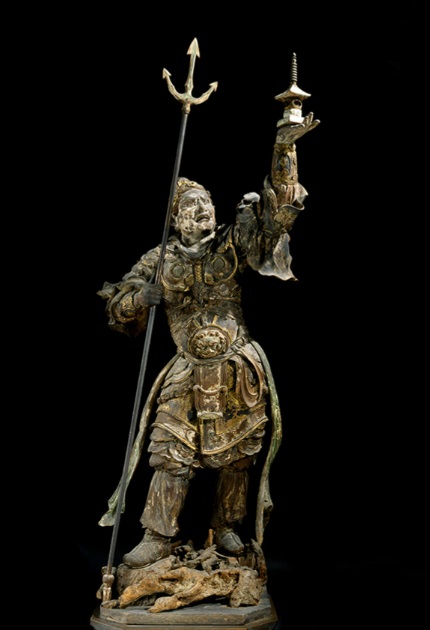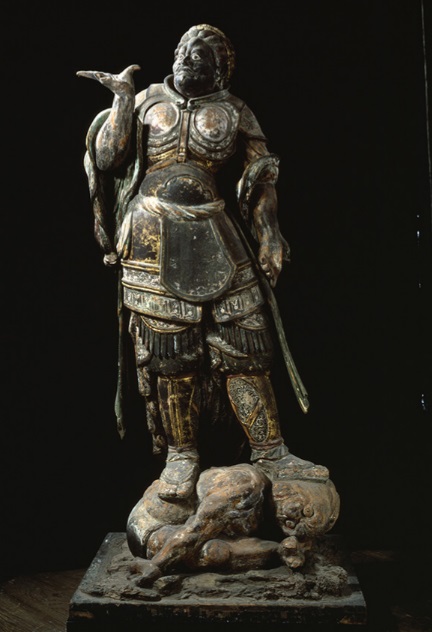Hokuendo Hall is often referred to as the most beautiful octagonal hall in Japan, yet it is located in a somewhat secluded spot within the Kofuku-ji Temple grounds, making it less noticeable. It sits at the western corner of the temple grounds, further behind the Chukondo Hall, so it is a bit distant whether you enter from the northern approach on Omiya Street or climb the stairs from the Sarusawa Pond side. From Kintetsu Nara Station, it’s about 100 meters into the Higashimuki Shopping Street, and then you can see the path that leads up to the Kofuku-ji grounds on your left. Normally, the hall is not open to the public, so you can only admire it from the outside. However, during special openings in spring and autumn (around Golden Week in spring, and from mid-October to early November in autumn), you can enter the hall. (Note: There seems to be no special opening in autumn 2024.)
When I first visited, I was deeply moved by the overwhelming space, as if the very act of prayer had been transformed into form. Even as time passes, that sense of awe never fades. It’s one of the must-see sights in Nara, so I highly recommend planning your visit during one of the special openings.

Tradition
Hokuendo Hall was built in 721 (Yoro 5) to commemorate the first anniversary of the death of Fujiwara no Fuhito, a rare and prominent statesman not only of the Nara period but also in Japanese history. Empresses Genmei and Gensho, who were mother and daughter and whom Fuhito had supported throughout their reigns, ordered Prince Nagaya to construct the hall. The development and prosperity of Heijokyo (the ancient capital) would not have been possible without Fuhito’s influence. Kofuku-ji Temple is located at the foot of Mount Wakakusa, overlooking the site where Heijokyo once stood. Hokuendo Hall sits at the western edge of the temple’s elevated grounds, which at the time was likely the best vantage point for overlooking the capital. It is easy to understand why Empresses Genmei and Gensho chose this location for the construction of Hokuendo to honor Fuhito.
Kofuku-ji, where Hokuendo Hall is located, started as a temple associated with the powerful Fujiwara clan and later grew into an official state temple, though it retained elements of a private temple. Kofuku-ji’s origins can be traced back to Yamashina-dera, which was established in 669 by Kagami no Okimi, the wife of Fujiwara no Kamatari, when Kamatari fell ill in Otsukyo. After the Jinshin War (672), the temple was moved to the capital of Asuka and renamed Umayasaka-dera. With the relocation of the capital to Heijokyo in 710, Fuhito moved the temple to its current location and renamed it Kofuku-ji.
The dual identity of Kofuku-ji as both a state temple and the Fujiwara clan’s temple highlights its unique origins and characteristics.
Inside the Hall
I visited during the special spring opening. Despite it being May, the sun shone as if it were summer, and the white gravel around Hokuendo Hall gleamed brilliantly. As I entered the hall, my eyes, accustomed to the bright light, felt momentarily dazzled, and my vision blurred as if I couldn’t see anything. At the same time, a cool breeze flowed through, and the overwhelming presence of the massive statues filled my sight. In front of me was a powerful, prayer-filled space, reminiscent of the Sangatsudo Hall at Todai-ji Temple. Inside the hall, visitors can walk around the statues, allowing them to admire the Buddha figures from various angles.
When Hokuendo was originally built in 721, its principal image was a Maitreya Buddha, which Fujiwara no Fuhito is said to have revered. It was flanked by two attendant bodhisattvas, two arhats, and the Four Heavenly Kings. However, in 1181, during the Nanto Burning (the siege of Nara), Kofuku-ji Temple was almost completely destroyed by fire, on orders from Taira no Kiyomori, carried out by Taira no Shigehira. Hokuendo Hall was reduced to ashes. Although the temple’s reconstruction began afterward, Hokuendo was left untouched for about 20 years before full-scale efforts to restore it started. The monk Chogen initiated the fundraising efforts, and the project was led by Konoe Iezane. It is recorded that Unkei, along with 10 other sculptors, created nine Buddha statues for the hall.

The Maitreya Buddha statue was crafted by Genkei and Jōkei, while the Six Heavenly Kings and the statues of Asanga and Vasubandhu were each created by one of Unkei’s six sons. The attendant bodhisattvas were also sculpted by members of Unkei’s school of artisans. By this time, Unkei had already been bestowed with the title of Hōin (a high-ranking Buddhist title), and it is believed that he played the role of overall producer, overseeing the entire project.
Today, the only works by Unkei that can be seen in Hokuendo Hall are the seated statue of the Maitreya Buddha, and the statues of Asanga and Vasubandhu. The statues of Asanga and Vasubandhu have small crystal inlaid eyes (gyokugan), giving them a lifelike appearance. While they exude a sense of solemnity, they also leave a friendly and approachable impression.
The Four Heavenly Kings are represented by early Heian-period statues that were relocated from Daian-ji Temple. As I mentioned in the article on Nan’endo Hall, the history of the Four Heavenly Kings statues at Kofuku-ji Temple is complex. Reflecting the findings of various studies, during the consecration of the new Chukondo Hall in 2017, the statues of the Four Heavenly Kings created by Kōkei’s school, which had been housed in a temporary lecture hall, were moved to Nan’endo Hall, where they are now displayed alongside the central figure of Fukukenjaku Kannon. Prior to this, the Four Heavenly Kings statues that had been in Nan’endo Hall (originally thought to have been crafted by Unkei’s school for Hokuendo) were moved to the new Chukondo Hall. No matter how many times I try to make sense of it, the history is intricate and bewildering, but there must have been reasons for these decisions at the time.


The statues of Asanga and Vasubandhu from Hokuendo Hall are scheduled to be exhibited at the 130th anniversary exhibition “Super National Treasures: The Radiance of Prayer” at the Nara National Museum in spring 2025.
Access
Kofuku-ji Temple is about a 5-10 minute walk from Kintetsu Nara Station. Hokuendo Hall is located on the north side of the western end of the temple grounds, near Omiya Street.

